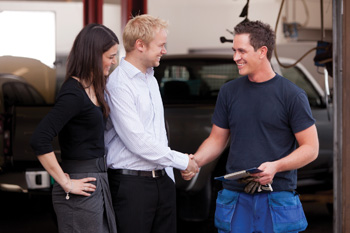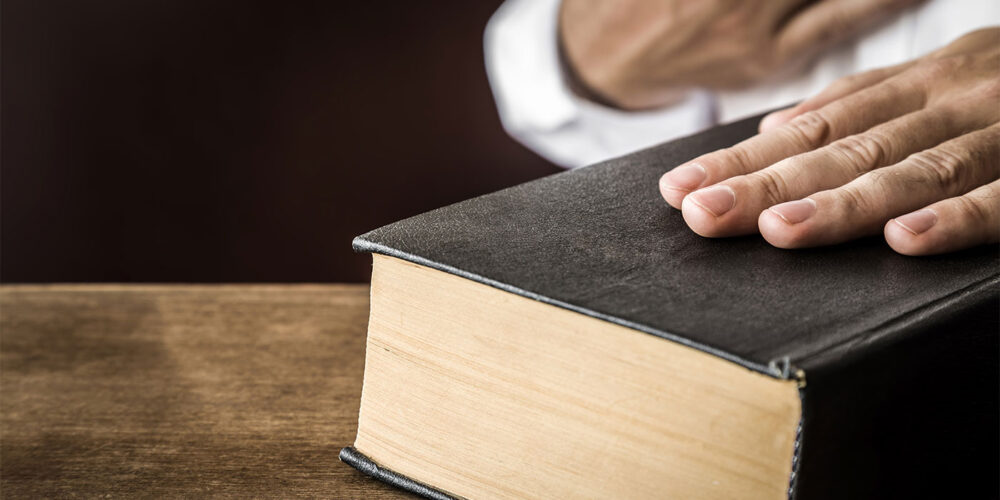 My theory is that an owner of an independent body shop splits his or her time among three main job functions: sales, production and finance. As 2014 comes to a close, I would like to share some simple best practices I see the most successful shop owners employ in each area.
My theory is that an owner of an independent body shop splits his or her time among three main job functions: sales, production and finance. As 2014 comes to a close, I would like to share some simple best practices I see the most successful shop owners employ in each area.
Sales
As every survey ever done about collision repair confirms, Mr. and Mrs. Smith want to see a clean facility. I continue to be bewildered by shop owners who want to argue the point. “We’re too busy fixing cars to clean up,” they say. Or, “Our repair quality is our selling point, not our housekeeping.” If your parking lot and office don’t look spotlessly clean and tidy, Mrs. Smith won’t trust you with her car, no matter how good your repair quality might be. Like McDonald’s says, “If you’ve got time to lean, you’ve got time to clean.” Dust and vacuum twice a day, post professionally made signs listing your firm’s wonderful qualities and arrange the office space to look welcoming. If you’re not as spiffy-looking as your spiffiest competitor’s facility, you’ll never improve your close rate.
Track your estimate writing success every month – by individual estimator! The goal isn’t to write the most estimates or the most complete estimates, but to get the keys to Mrs. Smith’s damaged vehicle. Called close rate, capture ratio or batting average, it’s expressed as a percentage.
Nationally, a typical close rate is around 65 percent. Of one hundred consumers who came to the local body shop looking to have their vehicle repaired, 65 had their car fixed and 35 took the shop’s estimate and walked out. Divide the repairs by the estimates. For example, if you fixed 52 vehicles and wrote 80 estimates, that’s 52 divided by 80 which equals 65 percent closed. Don’t spend a fortune advertising to more consumers until you close the ones already in your office. A percentage in the low 80s is a good goal. Curious about your shop’s number? Simply divide last month’s ROs by last month’s estimates.
Smile and be sympathetic. Mr. and Mrs. Smith have a collision every seven years, are very upset and are worried their vehicle will never be the same again. Greet them immediately as they enter, ask about their circumstances, listen to what they say and generally act like you’re happy they’re there.
I contend the best closers speak specifics about the repair: “Mrs. Smith, we’ll remove the damaged panel with a special depth sensitive spot weld drill and restore the galvanized corrosion coating before we weld on the brand new panel using the same squeeze-type resistance spot welder they used when your car was built.” Do you think Mr. or Mrs. Smith know the difference between an STRSW and a hole in the ground? I don’t either, but at the other two shops the Smiths collected estimates from, both said, “It’ll be $2,000, let us know if we can help you.” They’re likely to choose the shop that sounded like they knew what would need to happen to make their car whole again.
My last sales tip is the most common suggestion in every sales program anywhere: Ask for the sale in no uncertain terms. Don’t say, “Let us know if we can help you.” Instead, say, “Mrs. Smith, as I hope I’ve explained, we have the highly trained technicians, state-of-the-art equipment, lifetime warranty and a hard-earned reputation for top quality work. I’ll personally see that your car receives our very best efforts. May we schedule you for tomorrow afternoon?”
Production
There is no shortage of collision repair philosophies. Repair or replace, aftermarket or salvage, tear-down estimating or best-guess and supplement – all have their advocates. My production tips are much simpler.
Arrange your shop in logical order and stick to it. Sometimes called 5S, it’s simply the concept that efficiency will go up if everyone can find what they’re looking for quickly. Where’s the good wire welder? The new battery charger? The booster box? High production shops all keep the techs in their stalls repairing the car, not wandering around looking for something necessary to complete their repair. At $44 per labor hour, every minute of every tech’s time is worth $0.73. No one profits when the techs are strolling through the shop looking for the missing items. Organize the shop with input from the techs. They know where the logical places to put things are located.
Mechanize the task. In other words, use appropriate power tools to reduce the time to complete the repairs. First and foremost, stop hand sanding! Yes, I recognize that styling lines and odd-shaped contours doesn’t lend itself to a power sander. So just do 80 percent of the sanding with a power tool and the last 20 percent by hand.
Metal working tools of every sort are available to repair collision damage faster; one of my favorites is a pin-less resistance welder. Like the Steck brothers advocated years ago, it’s much faster to remove damage from the outside of the panel rather than having to create access to the back side. Most shops own a pin welder, and I’m a big fan. But on many repairs, the time saved by welding the slide hammer directly to the panel rather than welding on pins, pulling on the pins, cutting off the pins and grinding off the heads will pay for the pin-less welder in just weeks.
Use parts carts, one for R & I parts and one for R & R parts. Pay low-tech, high school age help to check in, unwrap, examine for damage and load the parts onto the carts. Vow to never start work on Mrs. Smith’s car until all parts for that vehicle are loaded and ready on the carts. There will still be plenty of delay once the tech discovers the hidden damage, which will require even more parts. Control the pieces of the process that you can. I contend poor crash parts management is the single biggest impediment to productive collision repair.
Finance
Track something! Then improve it. Every single insurance company that does business with your body shop has stats on your performance. From parts-to-labor ratios to the number of separate part numbers used per repair to cycle time in days and touch time in hours, they keep and value numbers. They’re actuaries, of course, and predict losses and therefore policy rates based on their excellent databases. Shops that say they don’t have any DRPs and therefore aren’t concerned with their business’s statistics are foolish. Insurance pays for 90 percent of all collision repair, according to the most recent BodyShop Business industry survey; if they paid your shop for it, they kept records of your results.
Today’s body shops need to not only know where their results (often called KPIs or key performance indicators) fall in the insurer’s database but should be promoting their shop as the best choice because of their stellar collision repair stats. Don’t know what your shop’s stats are? Don’t know which ones your insurance partner is measuring? Uh oh. The days when one bottle of bourbon to the local agent and two bottles to the local adjustor were all the business math you needed are long gone. Without much investment income, insurance companies are striving every day to control repair costs, but not at the price of Mrs. Smith’s satisfaction with them. Be the shop that knows what the insurance company is measuring; advertise your better-than-average benchmarks and set a plan to improve those that aren’t as good.
Take Control
Owners of any small business have many hats to wear, and collision shop owners are no exception. Sadly, I see too many of them focus most of their efforts on production improvements. While certainly important, a concerted effort to improve sales and close rates and understand and improve their repair statistics will put more money in the till than a single-minded focus on cycle times or production efficiency.
Want some help with these issues? Ask your distributor and paint company for their advice. Ask the insurers what numbers they’re tracking. Enroll in a class on writing a better estimate, improving your marketing efforts or learning the collision repair math you’ll need to prosper tomorrow. We’re in a great industry; have your shop succeed by taking control. Work on your business, not just in your business!













